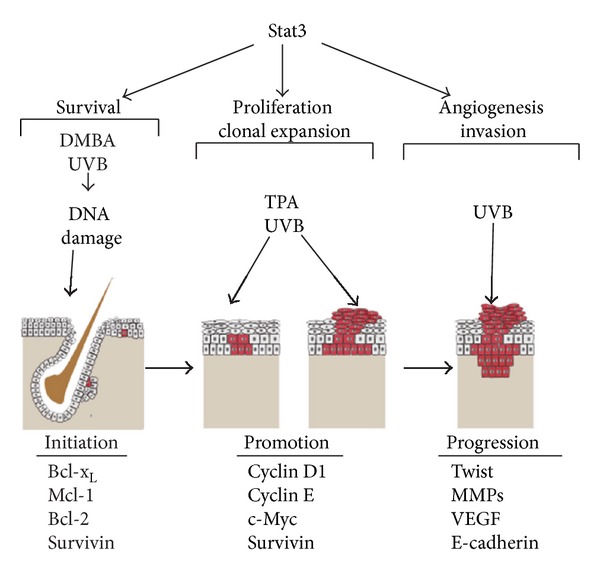Figure 2.

From studies in loss-of-function and gain-of-function mouse models, Stat3 has been shown to have a critical role in all three stages of skin carcinogenesis whether induced by chemicals (using the standard DMBA-TPA protocol) or by complete carcinogenesis with UVB. During the initiation stage, Stat3 aids in the survival of DNA-damaged keratinocyte stem cells (bulge region and possibly those in the interfollicular epidermis) induced by DMBA or UVB-irradiation by upregulation of prosurvival proteins such as bcl-xL, bcl-2, mcl-1, and survivin. Clonal expansion of initiated cells (promotion) is carried out through repeated treatment with TPA or UVB. In this stage, Stat3-mediated induction of cell cycle regulatory proteins (e.g., cyclin D1, cyclin E, c-myc, and survivin) is necessary for keratinocyte proliferation, epidermal hyperplasia, and development of papillomas/premalignant lesions. Progression or conversion of papillomas to SCCs is denoted as a downward invading lesion that traverses into the dermal compartment. Stat3 plays a role in the progression stage by regulating genes involved in angiogenesis and invasion (e.g., VEGF, MMPs, twist, E-cadherin).
